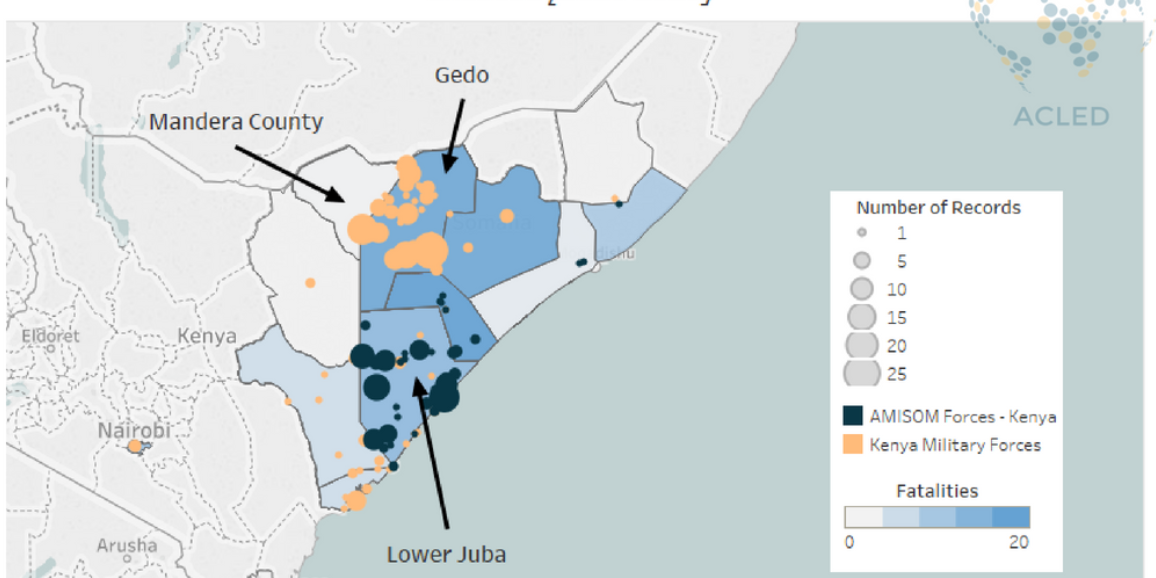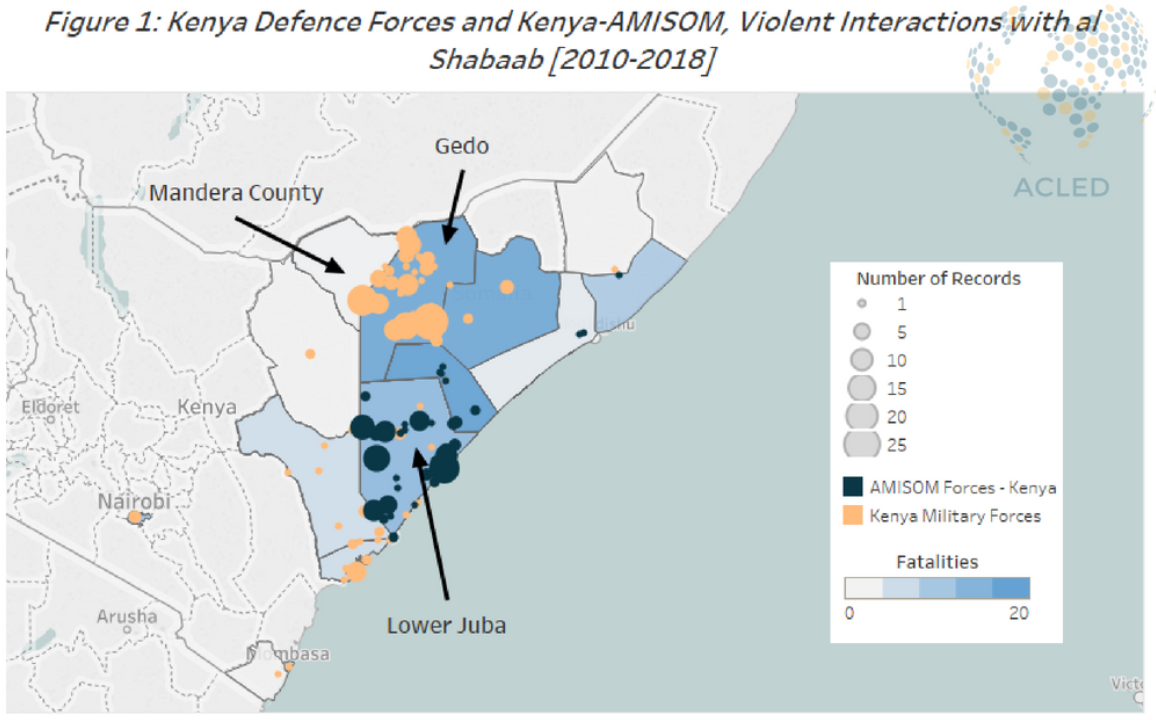On 12 June, the African Union Mission to Somalia (AMISOM) partners gathered in Nairobi to evaluate the current military stabilization projects in the wake of the nine year al Shabaab insurgency (New Vision Uganda, 12 June 2018). Over the course of its 11 year existence, the 21,600-strong multinational force has engaged al Shabaab in 1,884 instances, 343 of which have involved the Kenyan contingent of the force (Figure 1).
Although the Kenyan military has been deployed to southern Jubaland under the AMISOM charter, the Kenyan forces continue to operate air and land missions against Al Shabaab in Gedo, outside of the AMISOM command structure. Reaching peak activity in 2017, Kenya’s forays into the Gedo Region have been largely a response to numerous Al Shabaab offensives on Mandera, a Kenyan County on the border of Somalia (Figure 1).
AMISOM is planning to reduce their forces in Somalia from October 2018, with the aim of withdrawing entirely by the end of 2020 (IRIN, 28 February 2017). Despite the commitment to reduce the presence of AMISOM in Somalia, the Kenyan government is spending more on defence than ever before – in the current fiscal cycle, Kenya spent USD1 billion on defence, a 10% increase from the previous year. Kenya has the highest military expenditure in East Africa and the fifth highest in sub-Saharan Africa (Trading Economics, 2018). Kenya’s growing regional hegemony will have a substantial influence within Somalia following AMISOM’s exit in 2020. This will be particularly notable along the restive 800km border between Kenya and Somalia.
AfricaAl ShabaabAMISOMAnalysisCivilians At RiskFocus On MilitiasIslamist ViolencePolitical StabilityPro-Government MilitiasVigilante MilitiasViolence Against Civilians







